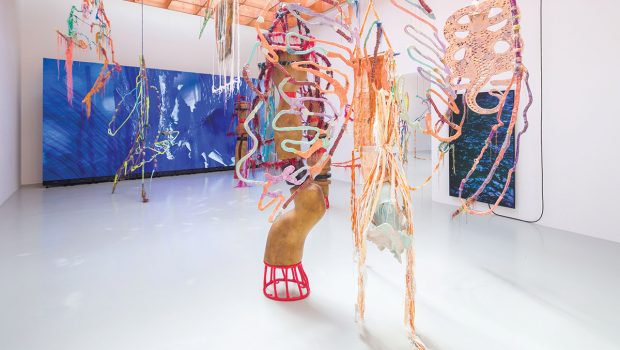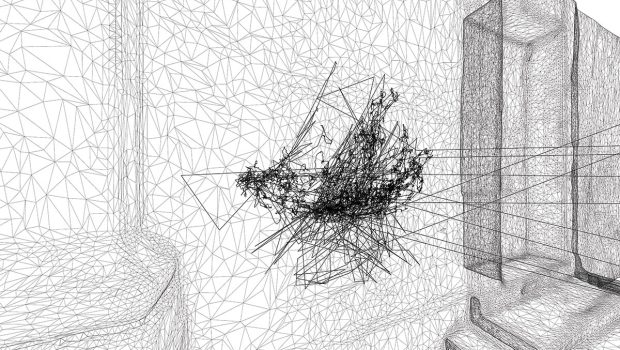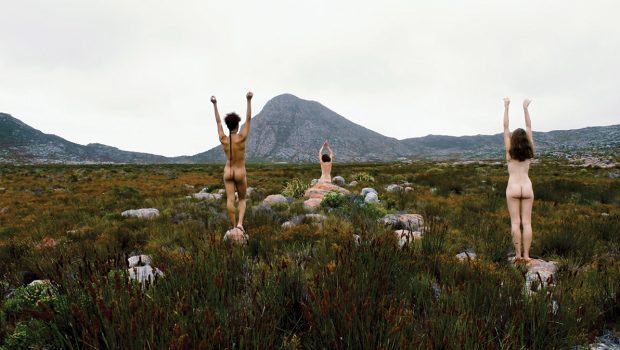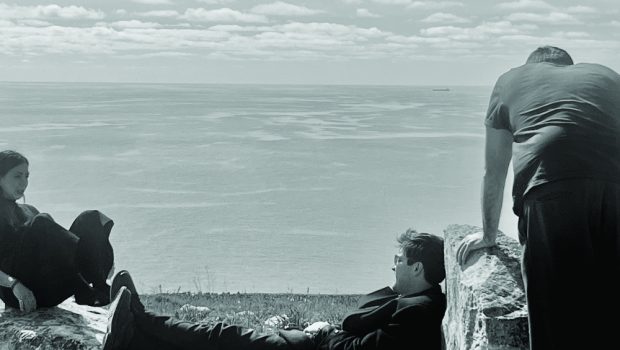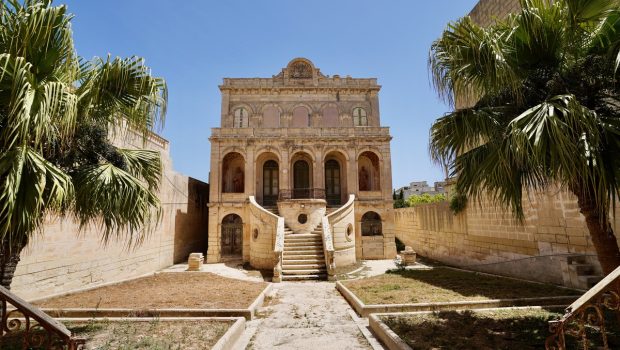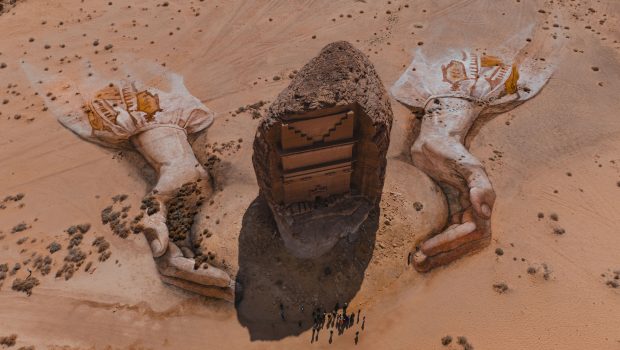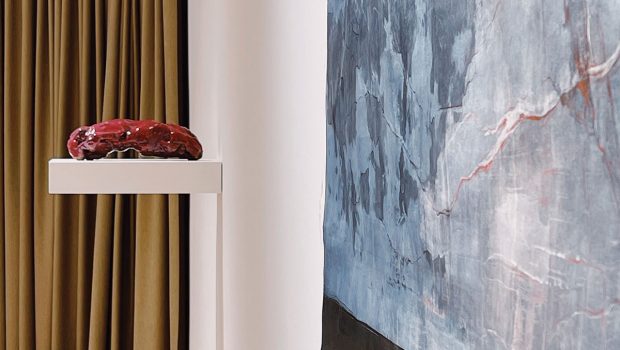BETWEEN WORLDS AND LAYERS
Interview | Mario Abela
In conversation with the Prisma Prize-winning artist, MARIO ABELA, exploring emotion, materiality, and his growing dialogue with Italy
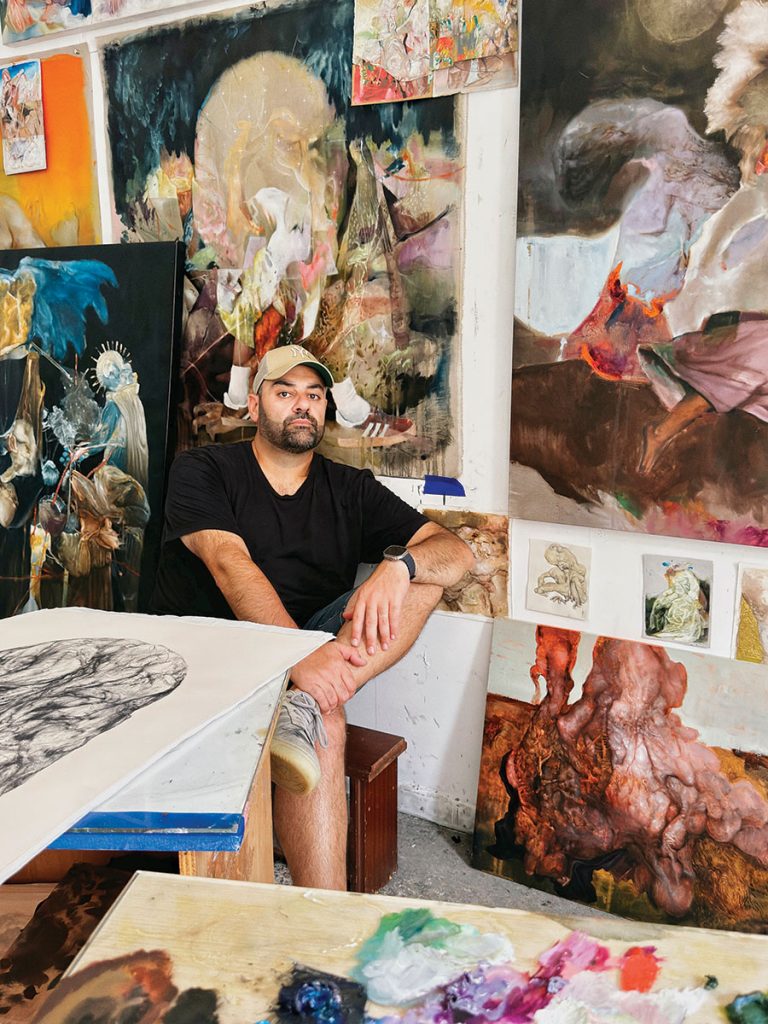
The studio itself is simple but alive with presence of unfinished canvases, drawings, brushes, and pigments scattered across tables. It carries a sense of both order and chaos, mirroring the process itself.
In an era saturated with immediacy and visual noise, Mario Abela’s work insists on a slower gaze — one that rewards contemplation and invites psychological immersion. His paintings often exist in tension: between control and chaos, visibility and erasure, solitude and exposure. Over the past year, Abela’s presence on the international stage has expanded significantly, especially within Italy, where his recent accolades and exhibitions have positioned him as a compelling voice in contemporary fine art.
We spoke with the artist about his evolving technique, how place and audience shape his practice, and why — even in today’s digitally driven landscape — the material language of painting remains vital.
Your technique is highly distinctive — could you walk us through your creative process? What materials, tools, or methods do you consistently work with, and how has your technique evolved over time?
Usually the process begins with observation; studying an image, gesture, or fragment from art history that carries tension. I approach painting as an investigation, exploring doubt, belief, and perception through form and material.
With a background in graphic design, reworking the image is second nature. Sketching and collage are essential starting points, often moving between physical and digital forms as I test how fragments interact and evolve.
I work primarily with oils on canvas and charcoal on paper. However, the technique developed from charcoal drawing; where tone and gesture dominate; into painting. Along the way I tried to preserve that same immediacy and sensitivity. Over time, the process has become more distilled, focused on how an image can shift between clarity and uncertainty while still holding emotional weight.
What kind of training or background has shaped your approach to art? Did you follow a formal academic path, or was your development more self-directed or experimental? Were there any mentors or pivotal moments early on?
My academic path was quite self-directed and exploratory. I moved across different disciplines, experimenting until I found a space where they could all intersect. I hold a Bachelor of Education in Art and History, and later pursued a Master of Fine Arts in Digital Arts. These two fields might seem distinct, but together they form the foundation of how I think and create.
Studying art and history gave me a strong understanding of visual language, narrative, and the importance of context — how every image carries layers of meaning shaped by time and culture. The transition to digital arts opened a different kind of awareness: it taught me to think about process, manipulation, and the fluidity of the image in contemporary visual culture.
This blend of traditional and digital sensibilities continues to define my approach. My current work merges painterly technique with conceptual precision, balancing the tactile immediacy of paint with an analytical understanding of how images function today. In many ways, my style is a culmination of all these experiences — experimental, layered, and always questioning the space between the historical and the contemporary.
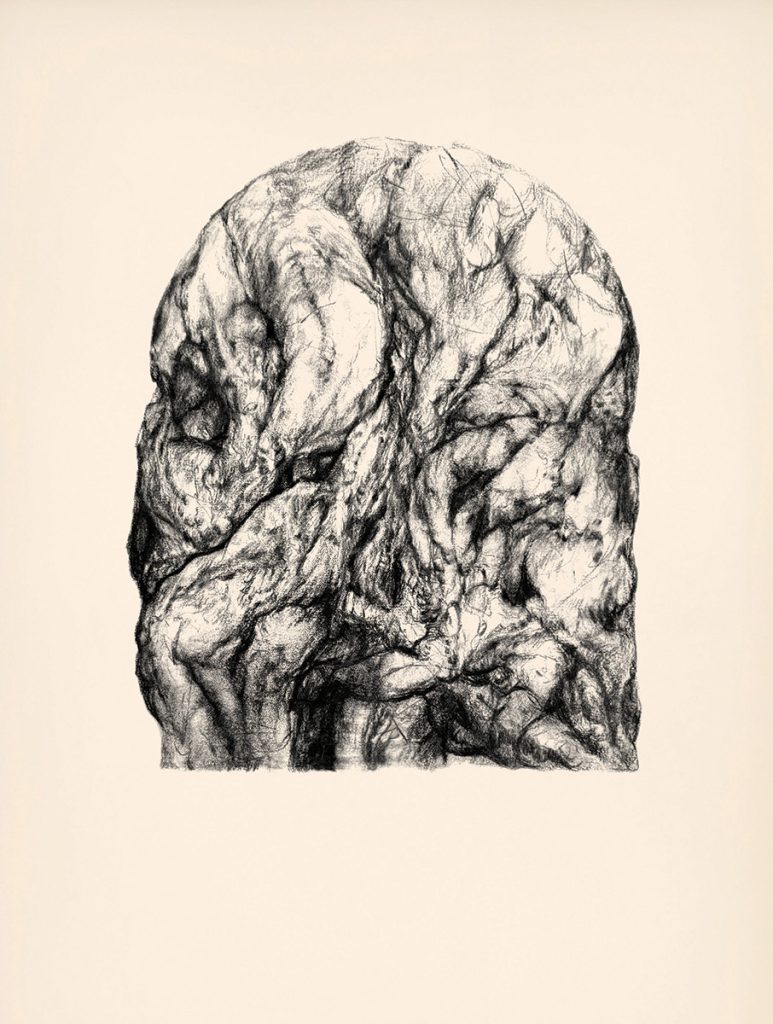
The handmade, human-created image carries something no algorithm can reproduce — the imperfections, hesitations, and decisions that occur in real time.
You’ve participated in several international group exhibitions recently. Which of these experiences stand out most, and how did showing your work to diverse global audiences impact your perspective as an artist?
What stands out most from these recent international exhibitions is the dialogue that unfolds when my work encounters new audiences and contexts. Each exhibition brings a different kind of reading. People approach the paintings with their own cultural and emotional frameworks, often seeing aspects I hadn’t consciously considered. That exchange is invaluable.
Showing work internationally has also expanded my sense of responsibility as an artist. It made me aware that the themes I explore usually, of doubt, fragility, belief, and transformation, are not confined to a specific place or tradition. They resonate universally, though interpreted differently.
You’re set to exhibit this November at B.EAST Gallery in Florence. Could you share a preview of the show — the concept behind it, the works you’ll present, and what you hope visitors in Florence take away from it?
The upcoming exhibition at B.EAST Gallery in Florence coincides with the major Beato Angelico exhibition taking place at Palazzo Strozzi and the Convento di San Marco. Conceived as a parallel event, it invites thirteen contemporary artists, including myself, to reinterpret the legacy of this Renaissance master through diverse visual languages, ranging from abstraction to figuration and urban-inspired approaches.
For this occasion, I will be presenting The Annunciation of Collapse alongside a series of six charcoal drawings titled On What Judgement?, inspired by one of Fra Angelico’s Last Judgements. Together, these works reflect on the delicate threshold between revelation and uncertainty, faith and collapse. While The Annunciation of Collapse reimagines divine illumination through a contemporary lens, the drawing series confronts the moral and existential weight of judgement; both personal and collective.
Exhibiting these works in Florence, in direct dialogue with Angelico’s enduring presence, feels deeply resonant. It’s not only a conversation across time, but also an invitation for viewers to reflect on how belief, doubt, and transformation continue to shape our own moment in history.
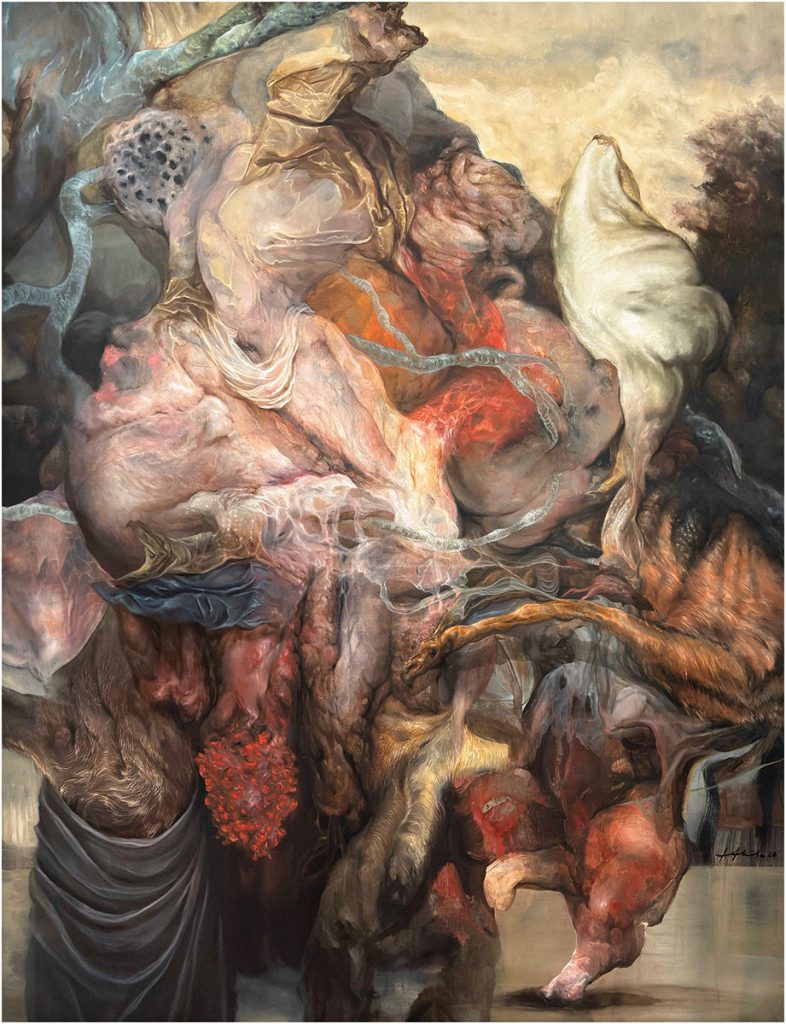
Every image carries layers of meaning shaped by time and culture.
Your presence in Italy has been growing steadily — from winning the 17th Prisma Art Prize in Rome, to exhibiting at CREA in Venice, and now in Florence. How has Italy influenced your artistic journey? Do you feel a unique connection to the Italian audience, or see your style aligning with particular movements or themes in the Italian art scene?
Italy has always felt close. Almost like an extension of home. My generation, and the one before me in Malta, grew up immersed in Italian television, cinema, and music. The visual and auditory rhythm of Italian culture shaped us from a very young age, creating an instinctive connection that remains part of who I am today. Even our names reflect that connection. My wife Angela and I, both bear names that trace their roots to the shared history and spirit of Italian culture.
Italians and Maltese have always shared a natural affinity. As Mediterranean neighbours, we mirror one another in traditions, religion, and sensibility — in our contrasts, our food, our smells, our gestures. So when I exhibit in Italy, it doesn’t feel foreign at all; it feels like a continuation of something familiar. The Italian audience’s way of seeing is very similar to Malta’s, only broader, more layered, and deeply responsive to the visual.
I don’t see myself fitting into a specific art movement, but I do relate to artists who use history as the foundation of their language; those who revisit the past to question and reinterpret it through the present. For this reason, I feel naturally at ease competing in Italy; both my work and I feel at home within that cultural and historical context.
What does a typical day in the studio look like for you? How do you balance hands-on creation with research, reflection, and the demands of exhibiting or promoting your work?
A typical day in the studio begins with a pause – time to observe what’s already there – to look closely at the works resting on the easel or hanging on the walls. That moment of stillness is essential; often the paintings themselves indicate what needs to happen next. From there, the day unfolds in shifting rhythms — periods of concentrated work followed by moments of distance and reflection. I might spend an hour deeply engaged with a surface, then step back to let the image settle, allowing space for both doubt and discovery.
The studio itself is simple but alive with presence of unfinished canvases, drawings, brushes, and pigments scattered across tables. It carries a sense of both order and chaos, mirroring the process itself. Some days are about continuing a painting already in progress; others begin with sketches or new ideas in charcoal. My approach is fluid rather than fixed, guided more by intuition than schedule.
Balancing creation with research and exhibition work is part of the rhythm. Reading, writing, and reflecting often feed directly into the visual process – obviously one sustains the other. I also dedicate time to sharing my work online, treating that not as promotion but as an extension of dialogue, a way to open the quiet space of the studio to a wider audience while keeping the core of the practice grounded and sincere.
How do you view the current state of fine art? With the rise of digital mediums, social media, and cross-genre experimentation, where do you feel traditional fine art fits — and how do you position your work within that landscape?
AI and technology are undoubtedly transforming the way we create, perceive, and share images and ideas. As both a lecturer in digital media and a practicing artist who works regularly with software and AI, I’ve witnessed their immense potential — but also their limits. These tools open extraordinary possibilities, yet they also remind us of what remains distinctly human in art.
Traditional fine art, in my view, is not being replaced but redefined. The handmade, human-created image carries something no algorithm can reproduce — the imperfections, hesitations, and decisions that occur in real time. Painting, drawing, and other tactile practices preserve that dialogue between the artist, the material, and the environment. It’s a kind of presence that resists automation.
I position my own work within that tension — between the digital and the handmade, the controlled and the uncertain. While I embrace technology as a research and compositional tool, the act of painting itself remains grounded in slowness, doubt, and touch. In a world saturated with instant images, I believe traditional fine art offers a necessary space for reflection — a reminder of the human trace behind every mark.
Looking ahead, what’s next for you artistically? Are there new themes, materials, or collaborations you’re exploring beyond Italy? What direction is your work moving in as we enter a new season?
Looking ahead, my next project is a solo exhibition on my home island of Gozo — marking ten years since my first comeback show in fine art. It feels symbolic to return to the same space, Art.e Gallery, where it all began. The exhibition will run from 29 November to 27 December 2025, offering a moment of reflection on a decade of growth, doubt, and transformation.
Beyond that, I’ll be taking part in a collective exhibition in Rome in mid-summer and developing an important collaboration for next year. These upcoming projects continue to expand my dialogue beyond Malta while keeping a strong connection to its roots.
Artistically, I plan to delve even deeper into conceptual and philosophical themes — exploring how historical imagery continues to resonate within contemporary contexts. History never grows old; it simply changes form, and I’m interested in tracing those shifts — how belief, doubt, and fragility continue to echo through time.


